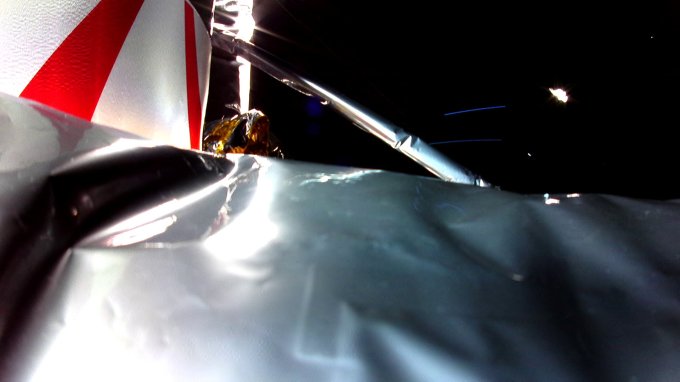
One busted valve led to the failure of Astrobotic's $108M Peregrine lunar lander mission

Astrobotic’s Peregrine lunar lander failed to reach the moon because of a problem with a single valve in the propulsion system, according to a report on the mission released Tuesday. Company leadership said in a press conference that engineers have redesigned the valve and introduced additional redundancy into the propulsion system of its next lander, Griffin, to ensure the problem doesn’t reoccur.
The report comes from a review board assembled shortly after the Peregrine mission concluded in January. That mission encountered trouble just hours after launch on January 8, when engineers activated the spacecraft’s propulsion system for the first time on orbit.
At that point, the fuel and oxidizer tanks should’ve been pressurized with helium, upon the opening of two pressure control valves, or PCVs. But helium began to flow “uncontrollably” through the second valve into the oxidizer tank, Astrobotic CEO John Thornton explained during the press conference.
“That caused a significant and rapid over-pressurization of the tank,” he said. “Unfortunately, the tank then ruptured and subsequently leaked oxidizer for the remainder of the mission.”
That PCV was unable to reseal, likely due to a mechanical failure caused by “vibration-induced relaxation” between some threaded components inside the valve, the review board’s chair John Horack said. Telemetry data was able to pinpoint the location and timing of the anomaly, and this data was consistent with the autonomous sequence to open and close the PCV, and the position of the valve on the propulsion system. Engineers were also able to replicate the failure in ground testing.
While the oxidizer leak continued, Astrobotic’s team was able to stabilize the spacecraft, charge its batteries, and power its payloads. But the issue was ultimately fatal to the mission, and after 10.5 days, the spacecraft returned to Earth and burned up in the atmosphere.
The 34-person review board included 26 people internal to the company and eight from outside. The board reviewed not just the data collected during the mission, but also all the data from the flight qualification campaign and component testing. In the end, it determined that the likely cause of the malfunction was the failure of that single helium PCV in the propulsion system.
Why valves are a spacecraft engineer’s worst nightmare
The board also compiled a timeline of events that led to the failure, and it starts all the way back in 2019, when Astrobotic contracted an unnamed vendor for the development of the propulsion feed system. When that vendor started suffering technical and supply chain issues due to the COVID-19 pandemic, Astrobotic made the decision in early 2022 to terminate their contract and finish the partly assembled feed system in-house.
“By this time, we’d already made the decision to do Griffin’s propulsion system in-house, to do more vertical integration,” Astrobotic’s mission director Sharad Bhaskaran said. “We’d already developed a lot of the capabilities to do that propulsion integration. … This also burned down some of the risk going into the Griffin program, which is far more complex than Peregrine.”

But Astrobotic engineers started encountering issues with the original vendor’s propulsion components — in particular the PCVs. In August 2022, they switched to a different, unnamed PCV supplier, and those valves were installed on the lander.
A final set of tests on the propulsion system showed leaks in one of the two PCVs — but not the one that ultimately leaked on orbit. That one tested fine; the one that leaked was repaired. While Bhaskaran acknowledged that the second PCV was identified “as a risk in our risk register” due to the leak with the first during testing, engineers ultimately deemed that the failure was low because the lander passed final acceptance testing.
He justified not replacing the second PCV, saying it was located much farther into the spacecraft and would have required “extensive surgery” on the lander, invalidated the final testing, and carried additional risk that comes with disassembly and reassembly.
Horack echoed that the team’s decision-making was sound throughout: “I really found that, in looking at the team and looking at what happened … I can’t see any decisions that were made in the flow leading up to the launch where I would have said, ‘Hey, I think you should have done this differently.’”
These findings have already started to inform the development of the much larger Griffin lander, which is currently scheduled to launch to the moon before the end of 2025. In addition to redesigning the valve, engineers have introduced a regulator in the propulsion system to control the flow of helium to the fuel and oxidizer tanks, and backup latch valves as added redundancy in case the issue reoccurs with a PCV.